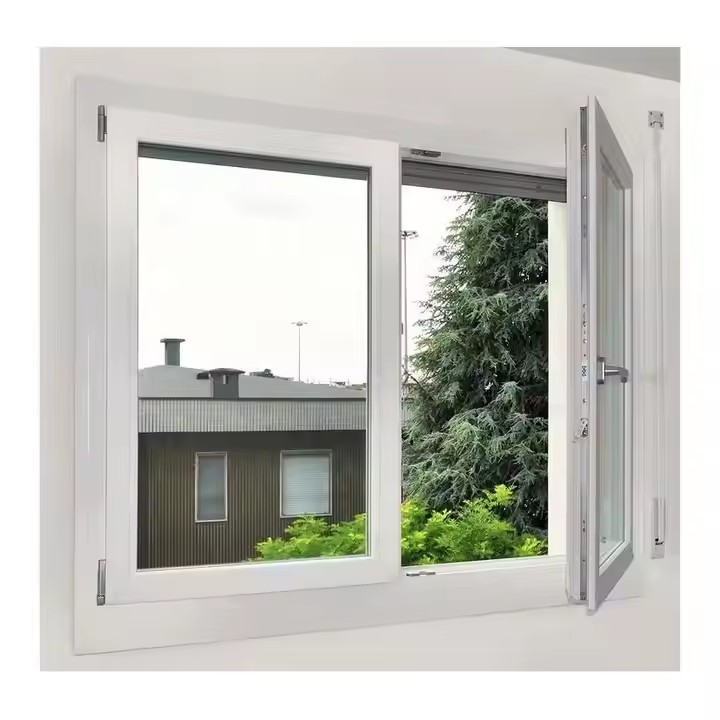New-style doors and windows are door and window products that, based on traditional ones, integrate modern design concepts, new materials and new technologies, presenting different stylistic features and functional performances from before to meet people’s diverse needs for beauty, comfort, environmental protection and personalization. New-style doors and windows not only show novelty in their external appearance but also display new features and styles in creative and innovative concepts. There is also novelty in technology for new-style doors and windows. The integration of advanced technologies with doors and windows forms an advanced style. The following are some common types of new-style doors and windows:
Modern Minimalist Style
Design Features: It pursues simple lines and geometric shapes and abandons complicated decorations. The frames of doors and windows are usually narrow to increase the lighting and the openness of the view, emphasizing the simple and harmonious coordination with the whole building. The design of modern minimalist style doors and windows mainly features black, white and gray. So, simplicity is the most common choice. New-style windows also have such characteristics, that is, they use simple frame designs to outline a simple, elegant and smooth visual feeling, giving people a sense of grandeur and comfort. Many modern villa styles adopt this minimalist style. So, the simple style has become the current trend.

Color Selection: It mostly uses neutral colors such as black, white and gray, or is paired with a small amount of metallic colors as embellishments, like brushed silver, gunmetal black, etc., creating a simple, elegant and fashionable atmosphere. Generally, black, white and gray are used for colors because these are very classic color combinations. Generally, the adaptability of black, white and gray is high and can well meet these color matching requirements. Generally, luxury mansions also often use this color combination because black, white and gray have great tolerance for any style.
Material Application: Commonly used materials include broken bridge aluminum alloy, high-strength steel, etc. These materials not only have good durability and stability but also can achieve a larger span and a sense of transparency. For glass, high-definition, low-reflection tempered glass or insulated glass is mostly selected to ensure good lighting and heat insulation performance. As for the application of materials, generally, new-style doors and windows use aluminum alloy materials because aluminum alloy materials are light in weight, of good quality and convenient for workers to install.

Nordic Style
Design Features: It focuses on the integration of natural elements and simple design. The shapes of doors and windows are simple and smooth. Large areas of glass are often used to introduce sufficient natural light, making the indoor space brighter and more transparent. Meanwhile, simple wooden window frames or decorative lines will be paired to add a natural and warm feeling.
Color Selection: It mainly uses natural colors such as white, beige, light wood color, etc., and occasionally is paired with some bright colors as embellishments, like light blue, yellow, etc., giving people a fresh and comfortable visual feeling. For the choice of colors, light colors are the choice of most people because light colors match well with many indoor colors. Light colors give people a warm and comfortable feeling. Many seaside villas choose this color combination because even the exterior walls by the seaside are the simplest white or light colors.
Material Application: Wood is an important material for Nordic style doors and windows, such as white oak, pine, etc., which can be used for window frames, sashes or as decorative elements. In addition, materials such as aluminum alloy and plastic-steel will also be used in combination with wood to take both aesthetics and performance into account. In terms of glass, in addition to ordinary transparent glass, insulated glass or Low-E glass with energy-saving and sound-insulation effects will also be selected.

Industrial Style
Design Features: It retains the texture of the original structure and materials of the building, emphasizing industrial elements such as exposed metal components, pipes and rough walls. Doors and windows mostly use black or dark-colored metal frames, with simple and tough shapes, having a strong mechanical sense and industrial flavor.
Color Selection: It mainly uses dark colors such as black, gray, brown, etc., paired with some bright colors in parts, like red, orange, etc., forming a sharp contrast to highlight the individuality and tension of the industrial style.
Material Application: The main materials are metals, such as cast iron, steel, etc., which undergo special surface treatments, such as rusting, sanding, spraying paint, etc., presenting a unique texture. Glass can be selected from transparent glass, frosted glass or colored glass to meet different lighting and privacy needs.

New Chinese Style
Design Features: It combines traditional Chinese elements with modern design techniques, simplifies and innovates on the basis of retaining the charm and essence of Chinese-style doors and windows. Symmetrical layouts, simple lines and geometric shapes, as well as traditional Chinese patterns and decorative details, such as fret patterns, swastika patterns, Chinese lattice patterns, etc., are often adopted.
Color Selection: It mainly uses dark colors, such as deep red, deep brown, jet black, etc., reflecting the solemnity and elegance of Chinese style. Appropriate light colors, such as off-white, grayish-white, etc., will also be paired to make the whole space not too dull.
Material Application: High-grade woods such as mahogany and sandalwood are mostly selected to show the texture and charm of Chinese style. Meanwhile, modern materials such as aluminum alloy and broken bridge aluminum will also be combined to improve the performance and durability of doors and windows. Glass usually adopts insulated glass or laminated glass, which can both ensure sound-insulation and heat-insulation effects and protect the traditional wooden structures from the influence of the external environment.

